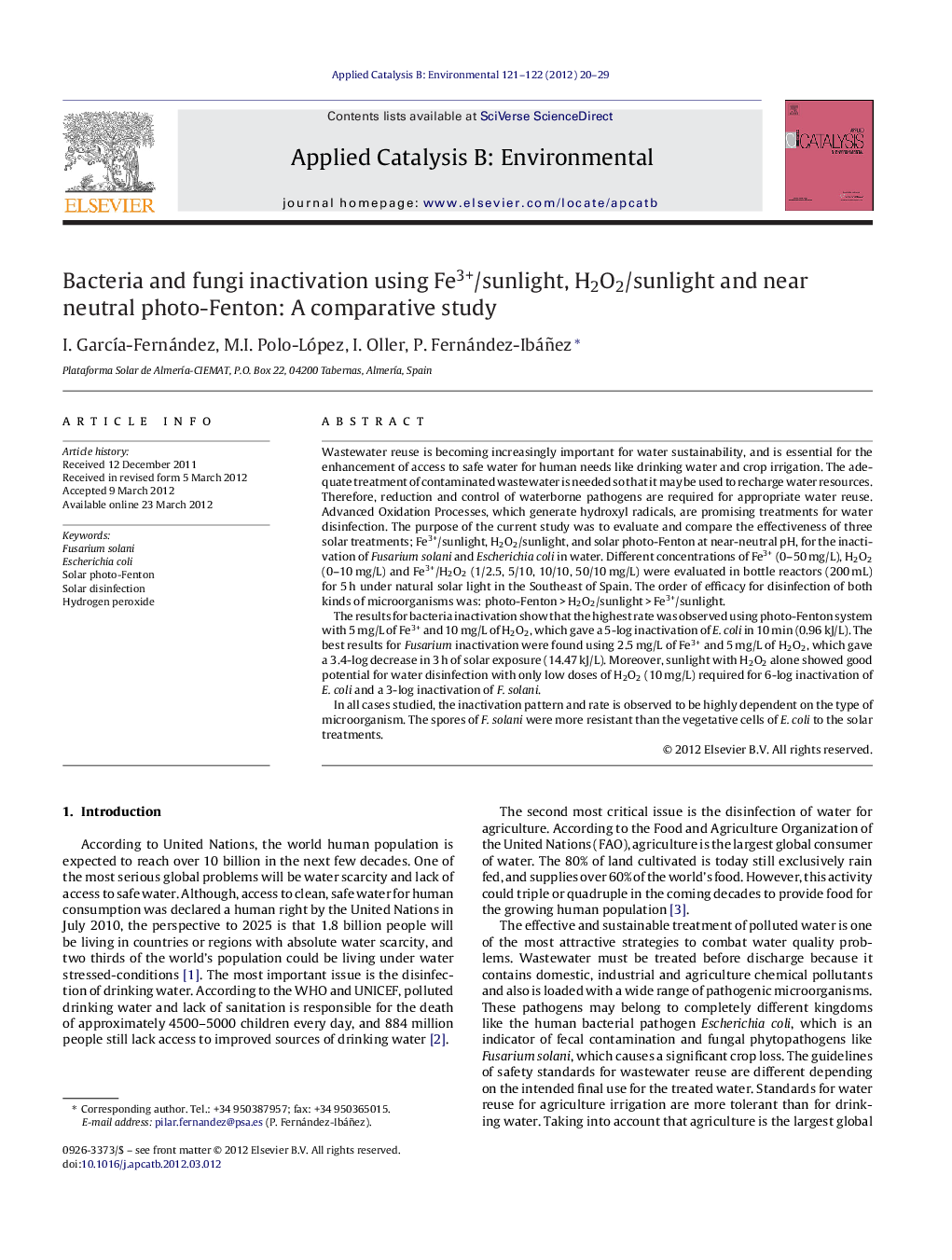| Article ID | Journal | Published Year | Pages | File Type |
|---|---|---|---|---|
| 46172 | Applied Catalysis B: Environmental | 2012 | 10 Pages |
Wastewater reuse is becoming increasingly important for water sustainability, and is essential for the enhancement of access to safe water for human needs like drinking water and crop irrigation. The adequate treatment of contaminated wastewater is needed so that it may be used to recharge water resources. Therefore, reduction and control of waterborne pathogens are required for appropriate water reuse. Advanced Oxidation Processes, which generate hydroxyl radicals, are promising treatments for water disinfection. The purpose of the current study was to evaluate and compare the effectiveness of three solar treatments; Fe3+/sunlight, H2O2/sunlight, and solar photo-Fenton at near-neutral pH, for the inactivation of Fusarium solani and Escherichia coli in water. Different concentrations of Fe3+ (0–50 mg/L), H2O2 (0–10 mg/L) and Fe3+/H2O2 (1/2.5, 5/10, 10/10, 50/10 mg/L) were evaluated in bottle reactors (200 mL) for 5 h under natural solar light in the Southeast of Spain. The order of efficacy for disinfection of both kinds of microorganisms was: photo-Fenton > H2O2/sunlight > Fe3+/sunlight.The results for bacteria inactivation show that the highest rate was observed using photo-Fenton system with 5 mg/L of Fe3+ and 10 mg/L of H2O2, which gave a 5-log inactivation of E. coli in 10 min (0.96 kJ/L). The best results for Fusarium inactivation were found using 2.5 mg/L of Fe3+ and 5 mg/L of H2O2, which gave a 3.4-log decrease in 3 h of solar exposure (14.47 kJ/L). Moreover, sunlight with H2O2 alone showed good potential for water disinfection with only low doses of H2O2 (10 mg/L) required for 6-log inactivation of E. coli and a 3-log inactivation of F. solani.In all cases studied, the inactivation pattern and rate is observed to be highly dependent on the type of microorganism. The spores of F. solani were more resistant than the vegetative cells of E. coli to the solar treatments.
Graphical abstract.Figure optionsDownload full-size imageDownload as PowerPoint slideHighlights► The inactivation of a bacterium and a fungus was evaluated under sunlight with H2O2, Fe3+ and H2O2/Fe3+. ► The inactivation pattern and rate is observed to be highly dependent on the type of microorganism. ► The order of disinfecting efficacy was: photo-Fenton > H2O2/sunlight > Fe3+/sunlight.
